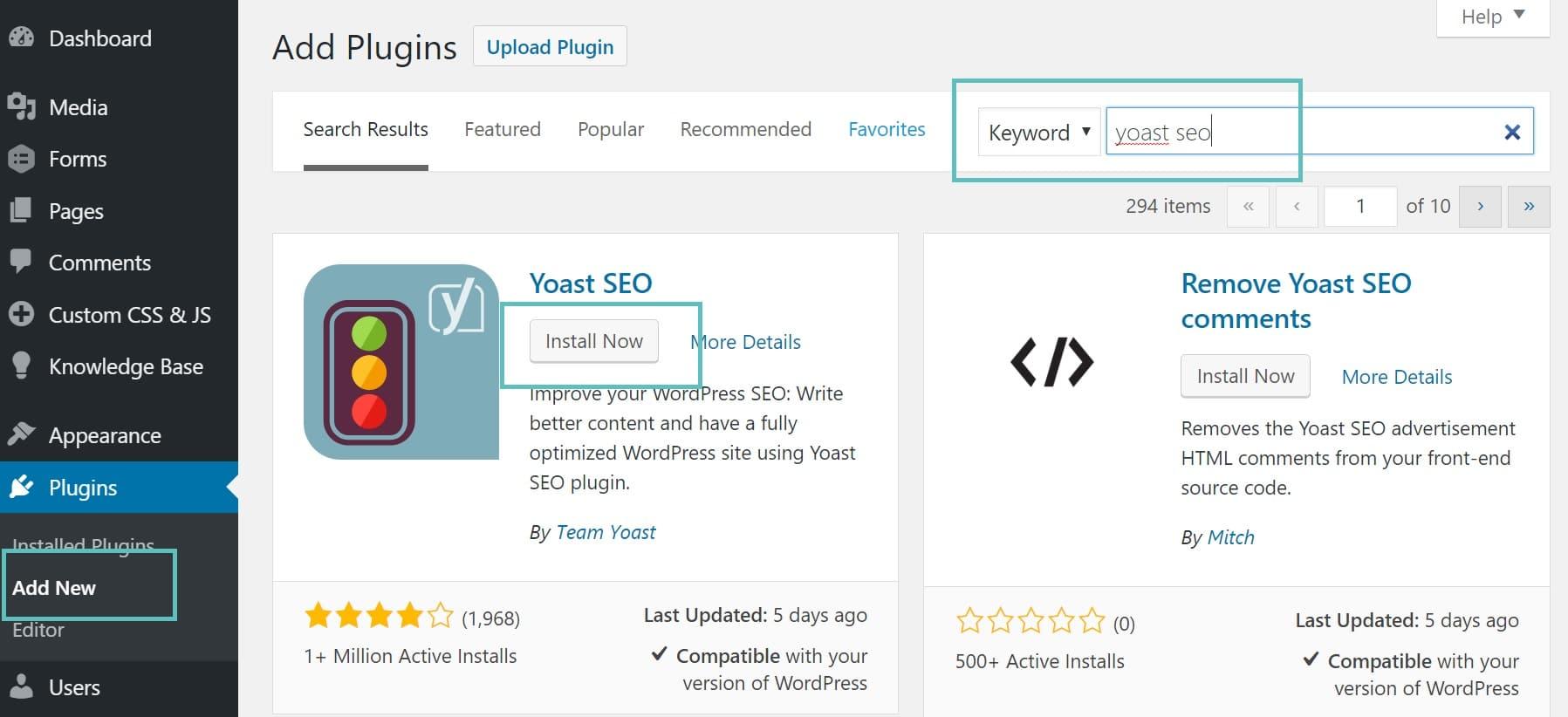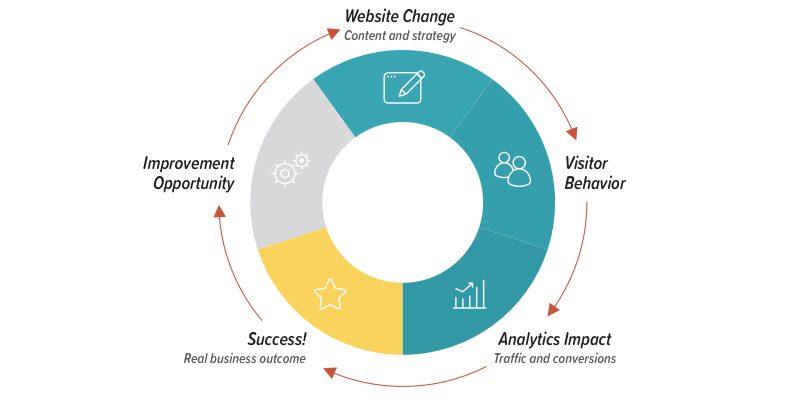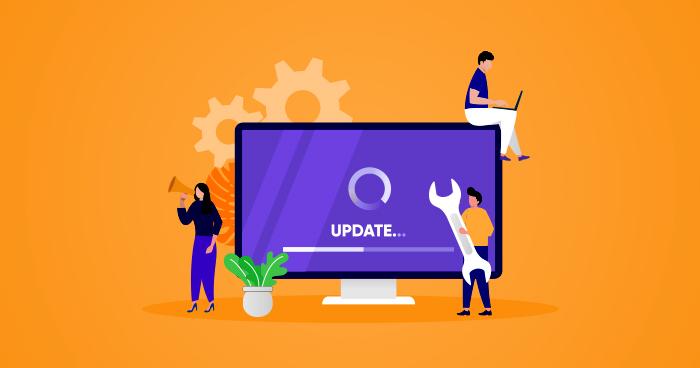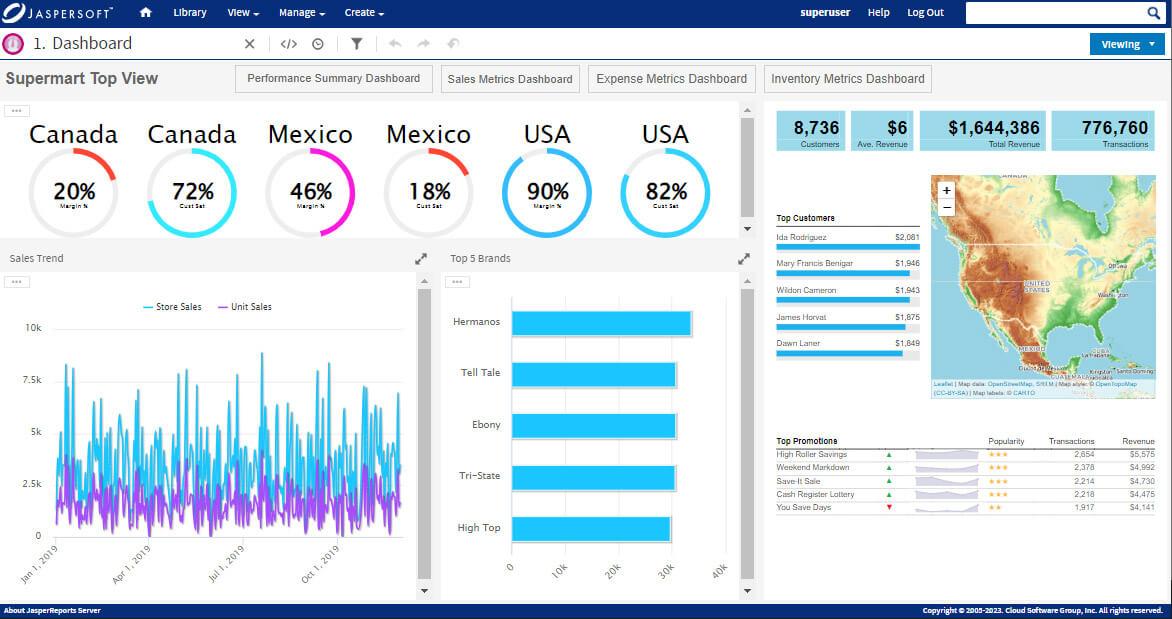Are you ready to take your online presence to the next level? Whether you’re a budding entrepreneur, a passionate hobbyist, or someone eager to share your thoughts with the world, creating a website can seem like a daunting task. But it doesn’t have to be! Building a WordPress website is not only easy but also incredibly rewarding. In this article, we’ll walk you through 5 simple steps that will empower you to design a stunning website that reflects your unique style and purpose. No coding skills? No problem! By the end, you’ll be equipped with the knowledge and confidence to launch your very own site. So, grab your favorite beverage, and let’s dive in—your digital journey starts now!
Choosing the Right Hosting Provider for Your WordPress Journey
Choosing a hosting provider is one of the most crucial steps in your WordPress journey. It sets the foundation for your website’s performance, security, and reliability. With so many options available, making the right choice can feel overwhelming. However, by focusing on key factors, you can confidently select a provider that meets your needs.
Performance and Speed
The performance of your website heavily relies on the hosting provider you choose. Look for providers that offer Solid State Drives (SSDs) and Content Delivery Networks (CDNs). These technologies ensure faster load times, which is essential for user experience and SEO. A hosting provider that guarantees at least 99.9% uptime is also critical to keep your website accessible to visitors.
Security Features
Your website’s security should be a top priority. It’s essential to select a hosting service that provides SSL certificates, regular backups, and robust security measures such as firewalls and DDoS protection. Moreover, inquire if they offer automatic updates for WordPress and plugins, which can help safeguard your site against vulnerabilities.
Customer Support
When you’re building a WordPress site, reliable customer support can be a lifesaver. Opt for a hosting provider that offers 24/7 support through various channels like live chat, phone, or email. A knowledgeable support team can help you troubleshoot issues quickly and efficiently, allowing you to focus on creating amazing content instead of wrestling with technical difficulties.
| Feature | Importance | What to Look For |
|---|---|---|
| Performance | Fast loading times improve user experience and SEO | SSDs, CDNs, 99.9% uptime |
| Security | Protects your website from threats | SSL, backups, firewalls |
| Support | Helps resolve issues quickly | 24/7 assistance, multiple channels |
Pricing Plans
While it can be tempting to choose the cheapest option available, consider the long-term value of your investment. Many hosting providers offer tiered pricing plans based on the features they provide. Always check what’s included in the plan—things like domain registration, email accounts, and storage space can make a significant difference in overall costs.
In essence, choosing the right hosting provider is about aligning their offerings with your specific needs. Take your time to research and compare various options, read user reviews, and test customer support before making your decision. A well-chosen host will pave the way for a successful WordPress journey.
Selecting the Perfect Theme to Reflect Your Brand
Choosing the right theme for your WordPress website is a crucial step in establishing your online presence. Your theme is more than just a design template; it’s the first impression visitors get of your brand. A well-selected theme not only enhances aesthetics but also improves functionality and user experience.
When browsing through themes, consider the following:
- Brand Identity: Your theme should resonate with your brand’s personality. Whether you’re aiming for a sleek, modern look or a more rustic, vintage vibe, make sure the theme reflects your unique identity.
- Responsive Design: With an increasing number of users accessing websites via mobile devices, ensure your theme is mobile-friendly. A responsive design adapts to different screen sizes, providing a seamless experience for all visitors.
- Customization Options: Flexibility is key. Look for themes that allow you to customize colors, fonts, and layouts easily, so you can tailor the look and feel to your brand without needing extensive coding knowledge.
As you narrow down your choices, keep an eye on performance aspects. A theme that loads quickly and is optimized for SEO will enhance your site’s visibility and user experience. Here’s a simple comparison table to help you evaluate some popular themes:
| Theme Name | Responsive | Customization | SEO-Friendly |
|---|---|---|---|
| Astra | ✓ | Highly | Yes |
| Divi | ✓ | Moderate | Yes |
| OceanWP | ✓ | Flexible | Yes |
Lastly, don’t forget to check user reviews and ratings. Feedback from other users can provide insight into the theme’s reliability, support, and overall performance. Make this step a priority to ensure you select a theme that not only looks great but also functions effectively.
By carefully considering these factors, you’ll be well on your way to finding the perfect theme that not only enhances your website’s visual appeal but also aligns seamlessly with your brand’s ethos.

Essential Plugins to Enhance Your WordPress Functionality
To take your WordPress website to the next level, utilizing the right plugins is crucial. These little tools can drastically improve your site’s performance and user experience. Here are some must-have plugins that can significantly enhance your site:
- Yoast SEO: This plugin is essential for optimizing your content for search engines. It helps you manage meta tags, generate XML sitemaps, and provides readability analysis.
- WooCommerce: If you plan to sell products or services, this plugin transforms your site into a fully functional e-commerce store, complete with inventory management and payment gateways.
- WPForms: Creating contact forms has never been easier. WPForms allows you to build custom forms with a simple drag-and-drop interface, making it user-friendly for both you and your visitors.
- Akismet: Protect your site from spam comments with Akismet. It automatically filters out spam and keeps your comments section clean and engaging.
- Elementor: This powerful page builder lets you create stunning layouts without any coding knowledge. The intuitive interface allows for easy customization, ensuring your site looks exactly how you envision it.
Each of these plugins can fill specific needs, transforming an ordinary site into a powerful online presence. However, be mindful of your site’s speed; overloading with too many plugins can slow it down. Here’s a handy table summarizing their key features:
| Plugin | Purpose | Key Feature |
|---|---|---|
| Yoast SEO | SEO Optimization | Readability Analysis |
| WooCommerce | E-commerce | Payment Integration |
| WPForms | Contact Forms | Drag-and-Drop Builder |
| Akismet | Spam Protection | Automatic Filtering |
| Elementor | Page Building | Custom Layouts |
By strategically selecting and implementing these plugins, you can enhance your site’s functionality and create a more engaging experience for your visitors. The right tools can make all the difference, helping you to achieve your website goals with ease.
Creating Engaging Content That Captivates Your Audience
When it comes to building your WordPress website, the key to keeping your audience engaged lies in how you present your content. An effective way to do this is by incorporating various types of media and interactive elements. Consider adding images, videos, or even infographics that complement your written content. These elements not only break up the monotony of text but also help convey your message in a more appealing way.
Think about your audience’s preferences. What do they find most engaging? Are they looking for in-depth tutorials, quick tips, or relatable stories? Tailoring your content to meet these interests can significantly enhance engagement. Here are some strategies to consider:
- Tell a Story: Use storytelling techniques to create a narrative that resonates with your audience.
- Ask Questions: Encourage interaction by posing questions that invite comments and discussions.
- Provide Value: Ensure each piece of content offers genuine value, whether through actionable tips or insightful information.
Don’t forget the importance of a visually appealing layout. A clean and organized design encourages readers to stay longer on your site. Utilize white space effectively to avoid overwhelming your audience. And remember, your content should be scannable. Use headings, bullet points, and short paragraphs to make it easy to digest.
To illustrate how these strategies can come together, here’s a simple table showing different content types and their engagement potential:
| Content Type | Engagement Potential |
|---|---|
| Blog Posts | High |
| Videos | Very High |
| Infographics | High |
| Podcasts | Medium |
| Newsletters | High |
Ultimately, the goal is to create a connection with your audience. By prioritizing their needs and preferences, you can craft content that not only draws them in but keeps them coming back for more. Remember, engagement is a two-way street—invite feedback and be responsive to your audience’s desires, creating a dynamic environment where they feel valued and involved.

Optimizing Your Website for Search Engines
To ensure that your WordPress website attracts the right audience, it’s crucial to optimize it for search engines. This involves several strategies that can enhance your visibility and ranking in search results. Start by focusing on the following essential elements:
- Keyword Research: Identify relevant keywords that your target audience is searching for. Use tools like Google Keyword Planner or Ahrefs to discover popular search terms in your niche.
- Quality Content: Create valuable and informative content that answers users’ queries. Search engines prioritize content that is engaging and helpful.
- Meta Tags: Craft compelling meta titles and descriptions for each page. These tags are your first chance to attract clicks from search results.
Another important aspect is optimizing your website’s speed. A faster-loading site not only improves user experience but also helps with SEO rankings. Here are some tips to enhance your site’s performance:
- Image Optimization: Compress images without sacrificing quality to improve loading times.
- Minimize Plugins: Limit the number of plugins to only those that are essential, as excessive plugins can slow down your site.
- Use Caching: Implement caching plugins to store static versions of your pages and reduce server load.
Link building is another critical factor in SEO. Establishing quality backlinks to your site from reputable sources boosts your credibility in the eyes of search engines. Here are some effective strategies:
| Link Building Strategy | Description |
|---|---|
| Guest Blogging | Write articles for other blogs in your niche and include a link back to your site. |
| Social Media Promotion | Share your content on social media platforms to increase visibility and attract links. |
| Engage in Forums | Participate in relevant forums and include links to your site when appropriate. |
don’t forget to monitor your site’s performance using tools like Google Analytics and Search Console. These tools provide insights into your traffic, user behavior, and site errors, allowing you to make informed adjustments to your SEO strategy.

Mastering the Art of Website Maintenance and Updates
Once you’ve successfully built your WordPress website, the journey doesn’t end there. In fact, keeping your site fresh and running smoothly is just as important as the initial build. Regular maintenance ensures that your site remains secure, performs well, and meets the expectations of your visitors. Here are some key practices to keep in mind:
- Regular Backups: Always backup your website at regular intervals. This guarantees that you can restore your site to its previous state in case of any mishaps.
- Plugin and Theme Updates: Outdated plugins and themes can expose your site to security vulnerabilities. Make it a habit to check for updates weekly.
- Content Refresh: Update your existing content to keep it relevant. This can involve adding new statistics, images, or simply revising the text to improve clarity.
- Performance Monitoring: Use tools like Google PageSpeed Insights to monitor your site’s performance and identify areas for improvement.
- Security Checks: Regularly scan your site for malware and vulnerabilities. Consider using security plugins that provide an extra layer of protection.
It’s crucial to have a structured approach to your website maintenance. Creating a maintenance schedule can help you stay on track. Here’s a simple example of what your monthly maintenance checklist could look like:
| Task | Frequency | Status |
|---|---|---|
| Backup Site | Weekly | Pending |
| Update Plugins | Weekly | Done |
| Check Site Speed | Monthly | Pending |
| Review Content | Monthly | In Progress |
| Run Security Scan | Monthly | Pending |
By following these practices, you not only maintain the health of your website but also enhance user experience and search engine rankings. Remember, a well-maintained website reflects professionalism and reliability, encouraging visitors to return time and time again.
Leveraging Social Media to Drive Traffic to Your Site
To effectively utilize social media as a conduit for driving traffic to your WordPress site, start by identifying the platforms that resonate most with your target audience. Each social media channel offers unique advantages and demographics; thus, understanding where your audience spends their time is crucial. For instance, if your focus is on a younger demographic, platforms like Instagram and TikTok could be the ideal choice. On the other hand, LinkedIn may be more suitable for reaching professionals in your niche.
Once you’ve pinpointed the right platforms, it’s time to create engaging content that will entice users to click through to your site. Consider the following strategies:
- Visual Appeal: Use eye-catching graphics or videos that capture attention quickly.
- Value-Added Content: Share insightful articles, how-tos, or infographics that provide solutions to common problems.
- Interactive Posts: Engage your audience with polls, quizzes, or open-ended questions that encourage participation.
Incorporating social sharing buttons on your website can also streamline the process for users, making it easy for them to share your content across their networks. This not only increases your reach but also enhances your credibility, as shared content is often viewed as a recommendation from friends or colleagues.
To further enhance traffic, consider collaborating with influencers or businesses in your niche. Partnering for giveaways, joint content, or shout-outs can expose your brand to a broader audience who may be interested in your offerings. Ensure that these collaborations align with your brand values to maintain authenticity.
Lastly, analytics play a vital role in understanding what works. Utilize tools like Google Analytics and social media insights to monitor the performance of your posts. By analyzing which content drives the most traffic, you can refine your strategy and focus on what resonates best with your audience.

Understanding Analytics to Measure Your Success
In today’s digital landscape, understanding analytics is crucial for gauging the success of your WordPress website. By leveraging the right metrics, you can enhance user experience, optimize content, and ultimately drive conversions. Here are some fundamental aspects to consider:
- Traffic Sources: Identify where your visitors are coming from. Are they finding you through search engines, social media, or direct visits? This can help you focus your marketing efforts effectively.
- User Behavior: Analyzing how users interact with your site is vital. Track metrics such as page views, bounce rates, and time spent on pages to understand what content resonates most with your audience.
- Conversion Rates: Establish goals for your website, whether it’s newsletter sign-ups, product purchases, or contact form submissions. Monitor how many visitors complete these actions to measure the effectiveness of your calls to action.
Utilizing tools like Google Analytics can provide you with comprehensive insights. With just a few steps, you can set up tracking for your website:
- Create a Google Analytics account.
- Add your website as a property.
- Install the tracking code on your WordPress site.
| Metric | Description |
|---|---|
| Page Views | Number of times a page has been viewed. |
| Bounce Rate | Percentage of visitors who leave after viewing only one page. |
| Average Session Duration | The average time a user spends on your site. |
Once you have your data, take time to analyze it regularly. Look for trends over time; for instance, if you notice a spike in traffic after a specific blog post, consider creating more content around that topic. Additionally, don’t hesitate to experiment with A/B testing to see which headlines or layouts perform better.
making the most out of your analytics can significantly enhance your understanding of user engagement and site performance. By staying informed and adapting your strategy based on data, you can achieve greater success with your WordPress website.

Building a Community Around Your WordPress Website
Creating a thriving community around your WordPress website is essential for fostering engagement, loyalty, and growth. It transforms your site from a static platform into a dynamic space where users feel valued and connected. Here are some effective strategies to build that community:
- Leverage Social Media: Promote your website’s content on various social media platforms. Share snippets of your posts, behind-the-scenes content, or user-generated material to attract a wider audience and encourage interaction.
- Encourage User-Generated Content: Invite your visitors to contribute by sharing their thoughts, experiences, or stories related to your niche. This not only enriches your site’s content but also fosters a sense of belonging among your audience.
- Utilize Comments and Forums: Enable comments on your blog posts and consider setting up a forum. This creates a space for visitors to engage in discussions, ask questions, and share their insights, making your website a hub of activity.
- Host Events or Webinars: Organizing online events can significantly enhance community engagement. Whether it’s a Q&A session, a webinar, or a live chat, these events offer valuable opportunities for your audience to connect with you and each other.
- Implement Membership or Subscription Options: By offering exclusive content or benefits to members, you can create a sense of exclusivity and encourage users to become more involved in your community.
To track the growth of your community and understand what resonates with your audience, consider using analytics tools. Here’s a simple table to illustrate some key metrics you might want to focus on:
| Metric | Description |
|---|---|
| Active Users | Number of users engaging with your site regularly. |
| Comments Count | Number of comments left on your posts. |
| Social Shares | How often your content is shared on social platforms. |
| Event Attendance | Number of participants in your hosted events. |
Remember, the key to building a successful community is to be authentic and present. Respond to comments, engage on social media, and show genuine interest in your audience’s opinions. By creating a welcoming environment, you not only enhance the user experience but also transform your website into a vibrant, interactive community that thrives on collaboration and shared interests.
Frequently Asked Questions (FAQ)
Q&A: 5 Easy Steps to Build a WordPress Website
Q: Why should I choose WordPress for my website?
A: Great question! WordPress is one of the most popular content management systems in the world, powering over 40% of all websites. It’s user-friendly, highly customizable, and offers thousands of themes and plugins. Whether you’re launching a blog, an online store, or a portfolio, WordPress has the flexibility to meet your needs. Plus, with a massive community behind it, you’ll always find support when you need it!
Q: Do I need any technical skills to build a WordPress website?
A: Not at all! One of the best things about WordPress is its accessibility. You don’t need to know how to code or have any technical skills to get started. The platform is designed to be intuitive, and with our five easy steps, you’ll have your website up and running in no time. Just follow along, and you’ll be amazed at how simple it is!
Q: What are the first steps I should take to build my WordPress website?
A: The first step is to choose your domain name and hosting provider. Your domain is your website’s address (like www.yourwebsite.com), and the hosting provider is where your website lives online. Look for a reliable hosting service that offers one-click WordPress installation—this will make your life so much easier!
Q: Can I personalize my website to match my brand?
A: Absolutely! WordPress offers a plethora of themes that you can customize to fit your brand’s identity. You can change colors, fonts, and layouts with just a few clicks! Plus, with plugins, you can add new features and functionality to enhance your site. So whether you want a sleek, modern design or something more traditional, WordPress has you covered.
Q: What if I want to add more features later on?
A: One of the greatest advantages of WordPress is its scalability. Once your website is live, you can easily add new features as your needs grow. Want to include an online store, a contact form, or even a membership area? With the right plugins, it’s all possible! You’re in control, and you can expand your website anytime.
Q: How do I ensure my website is secure?
A: Security is a top priority for any website owner, and WordPress makes it easy to keep your site safe. Start by choosing a reputable hosting provider that offers security features like SSL certificates and regular backups. Additionally, use security plugins to enhance protection against vulnerabilities. Regular updates to your themes and plugins also ensure that your website is fortified against security threats.
Q: Is it really that easy to build a WordPress website in just five steps?
A: Absolutely! Once you’ve got your domain and hosting sorted, the rest is a breeze. With our step-by-step guide, you’ll install WordPress, choose a theme, customize your site, add content, and launch—all in just five simple steps. You’ll be left wondering why you didn’t start sooner!
Q: What if I need help along the way?
A: No worries! The WordPress community is vibrant and welcoming. You can find countless tutorials, forums, and support documents to assist you. If you prefer personalized help, many professionals and agencies specialize in WordPress development. Just remember, you’re not alone on this journey!
Building a WordPress website doesn’t have to be daunting. With these five easy steps, you can have a stunning site up and running in no time. Ready to take the plunge? Let’s do this!
Key Takeaways
And there you have it—five easy steps to building your very own WordPress website! It’s amazing how simple it can be when you break it down, right? Whether you’re looking to start a blog, showcase your portfolio, or launch a small business, WordPress provides the tools you need to make your vision a reality.
Now that you have the roadmap, it’s time to put your plan into action. Don’t let fear of the unknown hold you back—every web designer started as a beginner at some point! Embrace the learning process, and remember that every click is a step closer to your online presence.
So go ahead, dive in! Your website is waiting, and with it, a world of opportunities. If you stumble along the way, that’s perfectly okay; just keep pushing forward. And if you ever need a helping hand or more tips, don’t hesitate to reach out. Happy building, and welcome to the exciting world of WordPress!

